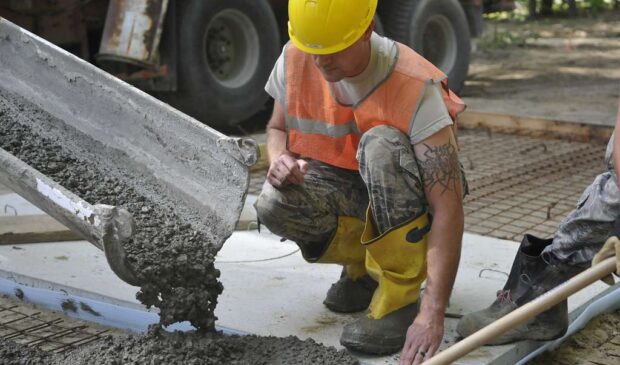Council celebrates Earth Day with plan to transition to low-carbon concrete
Monday, April 24, 2023 by
Kali Bramble City Council joined environmentalists across the globe last week, celebrating the 53rd annual Earth Day with a pair of resolutions aimed at lowering the city’s carbon footprint.
The resolutions, sponsored by Council Member Leslie Pool, mandate use of lower-carbon-footprint concrete for future city construction projects and urge federal action to reinstate funding for the Energy Efficiency and Conservation Block Grant Program. Both passed unanimously on consent.
“You may not know that concrete is the third-largest producer of carbon emissions after China and the United States,” said Pool. “Through local policy changes, we can do our best to be a part of (global) solutions … and I’m hoping that Travis County and other entities will follow our lead.”
The past few years have been promising for the lower-emission-concrete sector, with an increasing number of producers across the world embracing new carbon-sequestering technology and lower-impact materials. Austin’s own exploration of the field began in 2019, when the Environmental Commission spearheaded a partnership with CarbonCure Technologies that has since laid more than a million cubic yards of lower-impact concrete at projects such as the Sarah M. & Charles Seay Building at the University of Texas and the new Lake Austin HEB.
Concrete’s carbon footprint is driven largely by cement, the limestone-based, gluelike mixture that must be baked to searing temperatures to chemically cohere – both consuming energy and releasing carbon dioxide in the process. With demand for the material in growing cities like Austin only rising, cement production has swelled to account for over 7 percent of global carbon emissions, a figure measuring three times that of the aviation industry.
Companies like CarbonCure work to offset this footprint by injecting recycled carbon dioxide into the concrete mix, leveraging a reverse calcination process that locks the greenhouse gas in mineral form even upon demolition. Local producers like Lauren Concrete say the technology has offered massive environmental returns with little upfront capital investment, estimating that its UT and Lake Austin HEB projects have cumulatively prevented nearly 104 tons of carbon dioxide from entering the atmosphere.
Council’s resolution hopes to bring these returns up to scale, mandating the use of low-embodied-carbon concrete by implementing a review and approval process for mixes used on all future building projects. In addition to carbon sequestration, the resolution highlights alternative supplementary cementitious materials and other cement-reduction technologies as potential frontiers.
Pool’s second resolution is largely a statement of support for an ongoing effort to reinstate the Energy Efficiency and Conservation Block Grant Program, which in 2009 brought $7.5 million in funding for a number of energy-savings measures at city facilities. While Council is slated to receive an additional $855,340 thanks to the Biden administration’s Infrastructure Investment and Jobs Act, the bipartisan legislation currently circulating in the U.S. House would reauthorize and expand the grant program by $3.5 billion annually from 2024 through 2028.
“The program has only been funded twice since being enacted in 2007,” reads a statement from U.S. Rep. Marc Veasey of Texas, who co-authored the bill. “A reliable schedule of funding would allow local governments to build capacity and plan for future investments and sustained programs.”
The bill is currently being passed along to the House’s Committee on Energy and Commerce for further review. In the meantime, Austin will focus on codifying its new concrete standards, with plans for the city manager to return with an implementation plan in November.
The Austin Monitor’s work is made possible by donations from the community. Though our reporting covers donors from time to time, we are careful to keep business and editorial efforts separate while maintaining transparency. A complete list of donors is available here, and our code of ethics is explained here.
You're a community leader
And we’re honored you look to us for serious, in-depth news. You know a strong community needs local and dedicated watchdog reporting. We’re here for you and that won’t change. Now will you take the powerful next step and support our nonprofit news organization?











